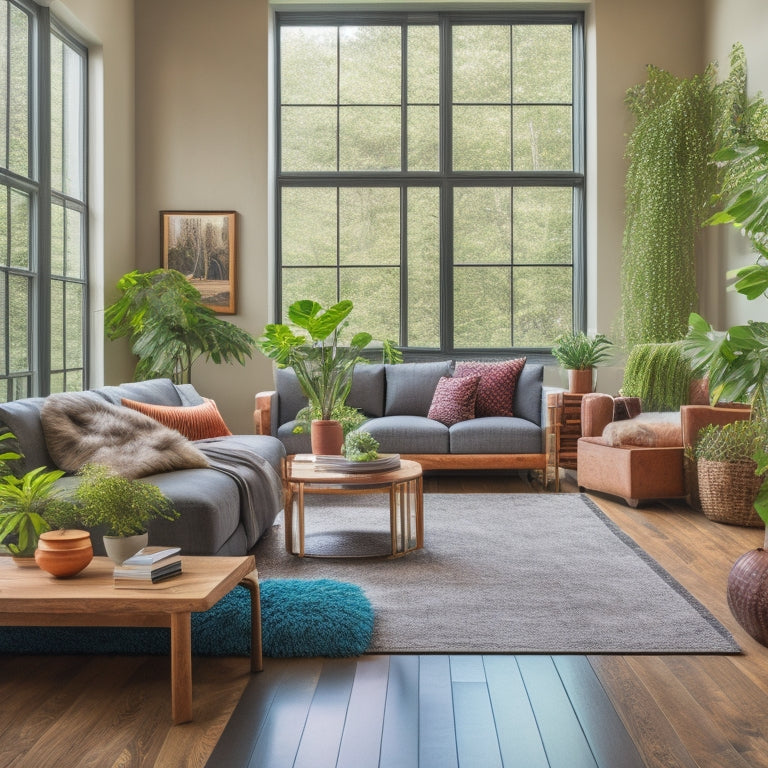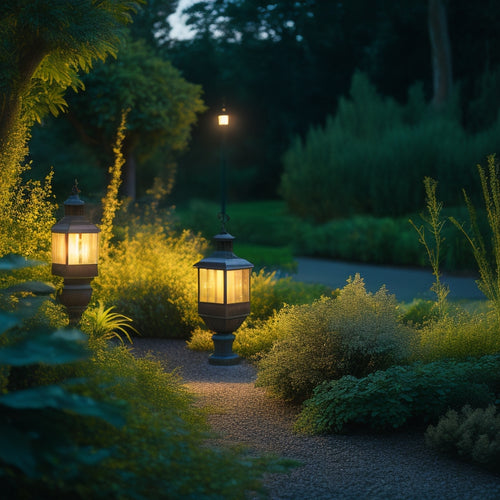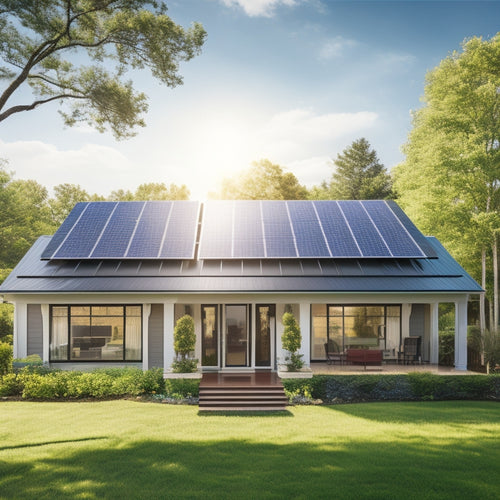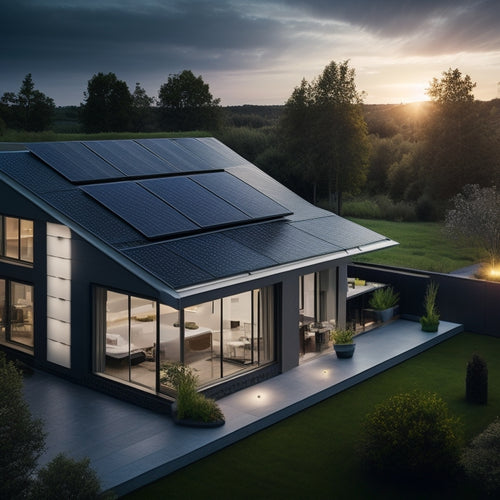
What Makes a Home Truly Green Renovation?
Share
To create a truly green home renovation, you're prioritizing a healthier living space and reduced environmental impact. You'll want to focus on sustainable materials, like FSC-certified and recycled options, as well as energy-efficient appliances and renewable energy sources like solar panels. Conserving water with low-flow fixtures and compost recycling is also key. Improving indoor air quality through natural lighting and non-toxic materials is essential, and smart home automation can optimize energy use and resource allocation. By considering these interconnected elements, you'll be well on your way to a thorough green renovation that not only benefits the planet but also enhances your daily life - and there's even more to investigate.
Key Takeaways
- A truly green home renovation incorporates sustainable materials, such as recycled and FSC-certified materials, to reduce environmental impact.
- Energy-efficient systems, including solar panels and insulation upgrades, minimize energy consumption and carbon footprint.
- Water conservation strategies, such as low-flow fixtures and greywater reuse systems, reduce water waste and lower bills.
- Indoor air quality improvement measures, including natural lighting and non-toxic materials, promote a healthier living environment.
- Smart home automation systems optimize energy usage, enhance convenience, and improve safety through remote control and notifications.
Green Building Materials Matter
When renovating your home, approximately 40% of the environmental impact comes from the materials you choose.
It's essential to prioritize green building materials to minimize your ecological footprint. Opt for sustainable sourcing, which involves selecting materials that are locally sourced, certified by organizations like the Forest Stewardship Council (FSC), and harvested in a way that minimizes deforestation.
You can also reduce waste by incorporating recycled materials into your design. Consider using reclaimed wood, recycled glass, and repurposed materials to reduce the demand for new, resource-intensive products.
For instance, incorporating eco-friendly materials like bamboo, which is known for its natural durability, can make a significant difference.
By exploring nature fusion design, which blends wood with natural materials, you can create an organic ambiance while reducing your environmental impact.
Energy Efficiency Essentials
In tandem with sustainable materials, energy efficiency is an essential aspect of a green home renovation. You'll want to focus on reducing energy consumption and carbon footprint. This can be achieved through various measures, including solar panel integration to utilize renewable energy and insulation upgrades to minimize heat loss.
| Energy Efficiency Measures | Benefits | Tips |
|---|---|---|
| Solar Panel Integration | Renewable energy, reduced bills | Assess your roof's solar potential, consider battery storage |
| Insulation Upgrades | Reduced heat loss, energy savings | Insulate walls, floors, and ceilings, use eco-friendly materials |
| Energy-Efficient Appliances | Reduced energy consumption | Look for Energy Star-certified products, consider smart home devices |
| Smart Home Automation | Real-time energy monitoring, optimized energy use | Integrate with energy-efficient appliances, consider professional installation |
Water Conservation Strategies
By incorporating water conservation strategies into your green home renovation, you'll not only reduce your environmental impact but also lower your water bills.
Water conservation is vital, especially in areas prone to drought. Compost recycling and rainwater harvesting systems eco-friendly methods can also play a significant role in reducing water waste.
Install low-flow showerheads and toilets to reduce water usage.
Implement rainwater harvesting systems to collect and store rainwater for non-potable uses like flushing toilets and watering plants.
Incorporate drought-resistant landscaping to minimize water waste on landscaping.
Install greywater reuse systems to reuse water from sinks, showers, and washing machines for irrigation and flushing toilets.
Indoor Air Quality Improvement
Air quality watchdogs, rejoice! You're taking an essential step towards a healthier living space. Indoor air quality improvement is a vital aspect of a green home renovation.
By incorporating a well-designed ventilation system, you'll efficiently remove pollutants and moisture from the air. This system will work in tandem with natural lighting, which not only reduces the need for artificial lighting but also helps purify the air.
Additionally, consider incorporating energy efficient smart thermostats to optimize energy usage and automate temperature control, further enhancing indoor air quality.
As you renovate, prioritize the use of non-toxic, low-VOC (volatile organic compound) materials and finishes to prevent indoor air pollution.
Smart Home Automation Systems
You're about to take your green home renovation to the next level by integrating smart home automation systems. This technology enables you to control and monitor various aspects of your home, from lighting and temperature to security and energy usage, remotely or through voice commands.
By automating these functions, you'll reduce energy waste, optimize resource allocation, and create a more comfortable living space.
Some benefits of smart home automation systems include:
-
Enhanced energy efficiency: Turn off lights and appliances when not in use to minimize standby power consumption.
-
Increased convenience: Control your home's systems from a single interface, no matter where you are.
-
Improved safety: Receive notifications and alerts in case of unexpected events, such as water leaks or security breaches.
- Seamless integration: Combine smart technology with sustainable living practices to create a truly green home.
Frequently Asked Questions
How Do I Balance Aesthetics With Sustainability in My Green Renovation?
You're probably thinking, 'I'll just slap some solar panels on the roof and call it a day.' But, no, balancing aesthetics with sustainability requires intentional design principles and choosing eco-friendly materials that harmonize with your home's unique style.
Can I DIY Some Green Renovation Projects or Do I Need a Pro?
You can DIY some green renovation projects, like upcycling materials or applying eco-friendly coatings, but complex tasks, like insulation or electrical work, may require a pro to guarantee safety and ideal results.
What's the ROI on a Green Renovation for Resale Value?
When you invest in a green renovation, you'll see a significant ROI through increased resale value, driven by growing resale trends and long-term energy savings, which can recoup up to 100% of your investment, according to various studies.
How Do I Ensure My Green Renovation Is Accessible for All Ages?
You'll guarantee your green renovation is accessible for all ages by incorporating universal design principles and age-friendly features, such as wide doorways, curbless showers, and adaptable storage, to create a comfortable, safe, and inclusive living space.
Are Green Renovations Only for New Builds or Can I Retrofit an Old Home?
Imagine a worn, vintage key revealing a cache of eco-friendly possibilities. You can retrofit an old home using innovative techniques and sustainable materials, breathing new life into its walls while reducing its carbon footprint.
Related Posts
-

Why Outdoor Solar Lighting Systems Are Sustainable
Outdoor solar lighting systems are sustainable because they utilize renewable energy, drastically reducing your carbo...
-

Home Solar Installation Cost
You're considering installing solar panels on your home, and the upfront cost is likely the biggest hurdle standing i...
-

Home Solar Battery
You're opting for a home solar battery that allows you to utilize the power of the sun during the day and use it at n...


